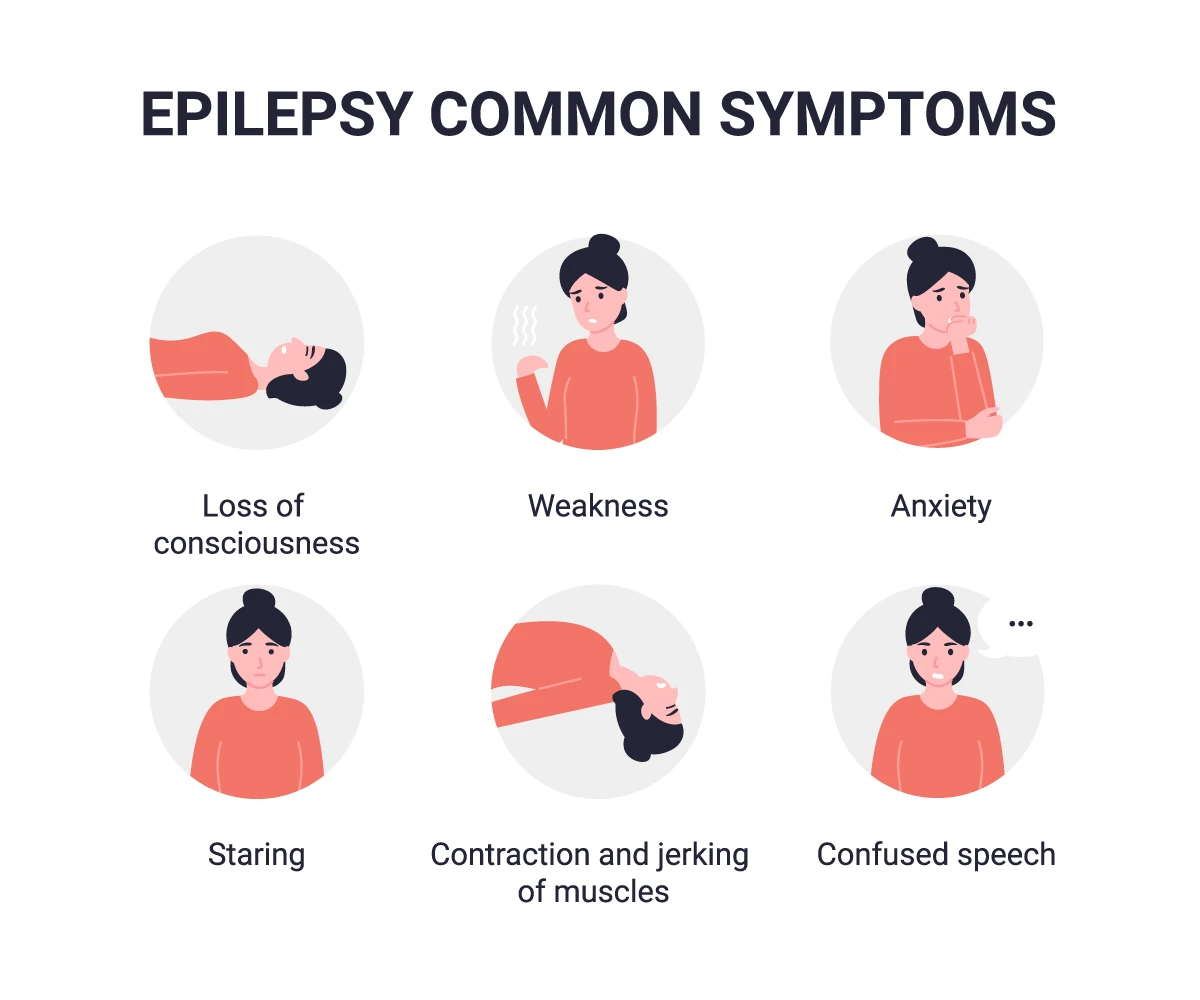Epilepsy is a chronic neurological disorder characterized by recurrent seizures caused by abnormal electrical activity in the brain. It is one of the most common neurological conditions, affecting about 50 million people worldwide. While epilepsy can affect people of all ages, it often begins in childhood or later in life. Seizures can vary greatly in frequency and intensity, from brief lapses in attention to severe convulsions. With proper management, many people with epilepsy can lead normal, active lives.
What Causes Epilepsy?
Epilepsy can have a variety of causes, but in many cases, the exact reason for the condition is unknown. Potential causes of epilepsy include:
1. Genetic Factors: Some people inherit genetic mutations that affect the way the brain functions, making them more susceptible to seizures. While epilepsy can run in families, not all types of epilepsy are hereditary.
2. Brain Injury: A traumatic brain injury from an accident, stroke, or infection can lead to epilepsy. Seizures may develop months or even years after the initial injury.
3. Developmental Disorders: Conditions such as autism or neurofibromatosis can be associated with epilepsy, particularly if there are structural changes in the brain.
4. Infections: Infections like meningitis, encephalitis, or even prenatal infections during pregnancy can increase the risk of epilepsy.
5. Tumors or Lesions: Abnormal growths or lesions in the brain can disrupt normal brain activity, triggering seizures.
6. Stroke: As one of the leading causes of epilepsy in adults over the age of 35, strokes cause damage to brain tissue, leading to the onset of epilepsy.
In about half of all epilepsy cases, the cause is unknown, which is referred to as idiopathic epilepsy.
Types of Seizures
Seizures are classified into two main categories: focal (partial) seizures and generalized seizures.
1. Focal Seizures: These begin in a specific part of the brain and can be divided into two types:
• Focal Aware Seizures: The person remains conscious but may experience unusual sensations, such as tingling, a strange smell, or emotional changes.
• Focal Impaired Awareness Seizures: Consciousness is impaired, and the person may exhibit repetitive behaviors or lose awareness of their surroundings.
2. Generalized Seizures: These involve both sides of the brain and include:
• Absence Seizures: Often called “petit mal” seizures, these involve brief lapses in awareness, usually lasting only a few seconds. The person may stare blankly or blink rapidly.
• Tonic-Clonic Seizures: Also known as “grand mal” seizures, these involve a loss of consciousness, stiffening of the body (tonic phase), and violent muscle contractions (clonic phase).
• Myoclonic Seizures: These cause sudden, brief jerks or twitches of the muscles.
• Atonic Seizures: Also known as “drop attacks,” these involve a sudden loss of muscle tone, causing the person to collapse.
Seizures vary greatly from person to person, and not all involve convulsions or dramatic symptoms.

Common Symptoms of Epilepsy
Seizures are the hallmark symptom of epilepsy, but the signs and symptoms can vary depending on the type of seizure. Some common symptoms include:
• Confusion or staring spells
• Uncontrolled jerking movements of the arms and legs
• Temporary loss of awareness or consciousness
• Sudden emotional changes, such as fear or anxiety
• Unusual sensations, such as strange smells or sounds
• Sudden falls or loss of muscle control
Some people may experience warning signs, called auras, before a seizure. These can include sensations like dizziness, a strange feeling in the stomach, or visual disturbances.
Diagnosing Epilepsy
Diagnosing epilepsy involves a thorough evaluation by a neurologist. A diagnosis is usually made after at least two unprovoked seizures. Tests and evaluations include:
• Electroencephalogram (EEG): This test measures electrical activity in the brain and can help identify abnormal patterns associated with seizures.
• Magnetic Resonance Imaging (MRI): An MRI scan can detect structural abnormalities or brain damage that could be causing seizures.
• Blood Tests: These may be done to check for underlying conditions that could trigger seizures, such as infections or genetic disorders.
Doctors will also take a detailed medical history and perform a neurological examination to help determine the type of seizures and possible causes.
Treatment Options for Epilepsy
Epilepsy is a lifelong condition, but it can often be successfully managed with proper treatment. Common treatment options include:
1. Medications: Anti-epileptic drugs (AEDs) are the most common treatment for epilepsy. These medications help control seizures by reducing abnormal electrical activity in the brain. The choice of medication depends on the type of seizures, the patient’s age, and overall health. Many people with epilepsy can become seizure-free with the right medication.
2. Surgery: In cases where medications do not control seizures, surgery may be an option. Surgery involves removing the area of the brain that is causing seizures or interrupting the nerve pathways that allow seizures to spread.
3. Vagus Nerve Stimulation (VNS): This treatment involves implanting a device that sends electrical pulses to the vagus nerve, helping to reduce the frequency of seizures.
4. Ketogenic Diet: This high-fat, low-carbohydrate diet has been shown to reduce seizures in some people with epilepsy, particularly children.
5. Lifestyle Changes: People with epilepsy can benefit from getting regular sleep, avoiding triggers like alcohol or flashing lights, managing stress, and taking medications as prescribed.
First Aid for Seizures
If you witness someone having a seizure, it is essential to know how to provide basic first aid:
• Stay Calm: Try to remain calm and stay with the person during the seizure.
• Protect from Injury: Move any objects away that could cause harm, and place something soft under their head.
• Do Not Restrain: Do not try to hold the person down or stop their movements.
• Do Not Put Anything in the Mouth: Contrary to popular belief, putting something in the person’s mouth could cause injury or choking.
• Time the Seizure: If the seizure lasts more than five minutes or if the person has repeated seizures without regaining consciousness, seek emergency medical help.
After the seizure, stay with the person until they are fully alert and able to communicate. It is common for someone to feel confused, tired, or disoriented after a seizure.
Living with Epilepsy
Epilepsy can be a challenging condition, but with proper management, many people lead full, active lives. Building a support system of family, friends, and healthcare providers can make a significant difference in managing the condition. It is also important to educate others about epilepsy to reduce stigma and ensure that those with epilepsy receive the care and support they need.
Conclusion
Epilepsy is a complex neurological disorder, but with advances in treatment and a better understanding of the condition, many people can effectively manage their seizures. Early diagnosis, medication, lifestyle changes, and, in some cases, surgery can help control symptoms and improve quality of life. By raising awareness and offering support, we can help individuals with epilepsy live with greater independence and confidence.



